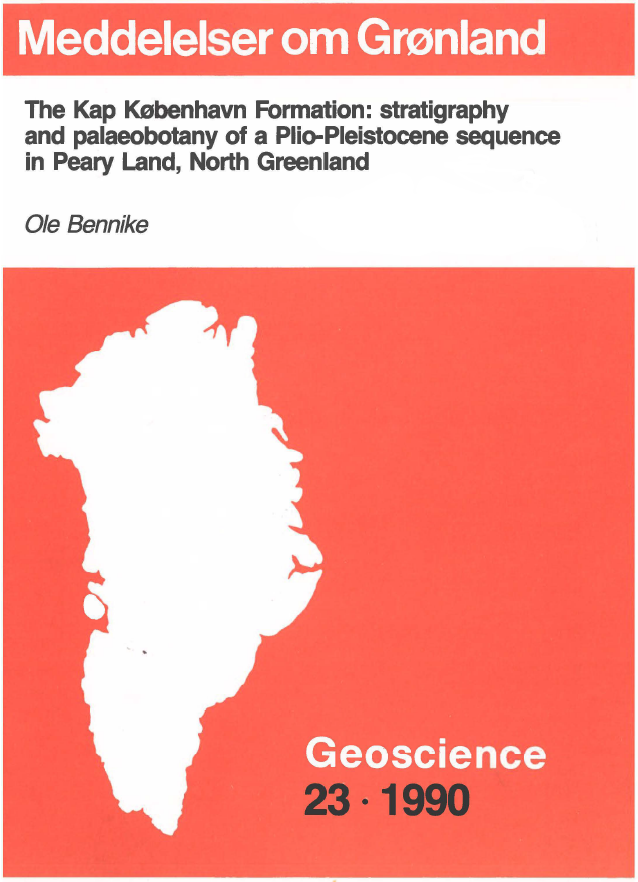The Kap København Formation: stratigraphy and palaeobotany of a Plio-Pleistocene sequence in Peary Land, North Greenland
DOI:
https://doi.org/10.7146/moggeosci.v23i.141978Abstract
The Kap København Formation in eastern Peary Land, latitude 82°30'N, comprises essentially two facies: silt and sand. The former was deposited in sublittoral environments below wave base, and contains in situ marine faunas, while the latter was deposited in the littoral zone: in the backshore, foreshore and shoreface. Part of this facies was deposited near river mouths and contains allochthonous remains of freshwater and terrestrial organisms. Virtually all major groups of plants and animals are represented in the formation.
This paper deals mainly with remains of vascular plants. Seeds, fruits and leaves of c. 60 taxa show that the area was vegetated by forest tundra growing in a humid subarctic climate. Boreal upland plants include Larix groenlandii sp. nov., an extinct species which was the dominant tree, Picea mariana, Thuja occidentalis, Betula alba, Taxus, Alnus, Myrica arctogale sp. nov., Cornus spp. and Viburnum. Tundra plants include Dryas octopetala, Oxyria digyna, Betula nana, Salix reticulata and Vaccinium uliginosum ssp. microphyllum. A number of wet land habitats existed in the area; they supported e.g. Aracites globosa comb. nov. The largest tree trunk measures 18 cm in diameter, and growth rings are extremely narrow and variable. The pollen flora, which is dominated by Betula, comprise only a minor part of arboreal pollen, indicating that trees were of minor importance in the regional vegetation. Many of the species represented in the assemblage are of modern circumpolar range, but the flora shows a marked affinity to the modern North American flora.
Biostratigraphical correlations of mammals, foraminifers, molluscs and ostracodes, supplemented by palaeomagnetic work, show that the sequence is 2 to 2.5 Ma(million years) in age (Plio-Pleistocene). The vascular plant flora resembles Neogene floras from the Arctic Ocean borderland, notably that from the Beaufort Formation on Meighen Island in northernmost Canada. The flora and vegetation point to a much warmer climate at the Plio-Pleistocene boundary than today. By extrapolation of the climatic interpretations it is suggested that the Inland Ice of Greenland did not exist at this time, and that the Arctic Ocean was not covered by perennial sea ice.

Downloads
Published
How to Cite
Issue
Section
License
Coypyright by the authors and the Commision for Scientific Research in Greenland / Danish Polar Center. No parts of the publications may be reproduced in any form without the written permission by the copyright owners.

